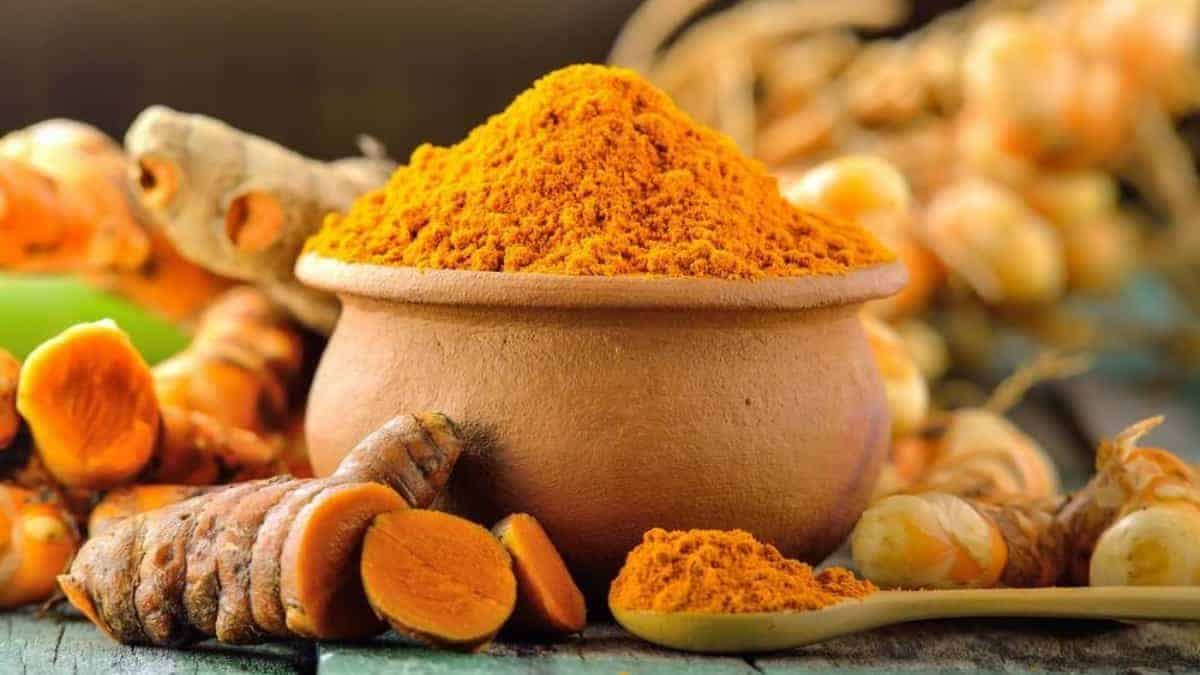Description
Turmeric is a spice with a distinctive bright yellow-orange color that is popular in the flavoring of Indian curries.
What does turmeric taste like?
Warm, bitter-sweet, and peppery in flavor with an aroma of earth and mustard.
Where does turmeric come from?
Originating in Southwest India turmeric is a central ingredient of Indian cooking. Turmeric or curcuma longa refers to the whole turmeric plant, whilst it is the root and leaves that are consumed. Primarily turmeric is thought of as yellow-orange in color however white and black varieties also exist with similar flavors.
Turmeric Uses
As a member of the ginger family turmeric is similar in its application, the root needs to be peeled and releases most flavor when fresh, finely grated or blended. Turmeric leaves that sprout from the root are used for their similar profile and bring flavors of grass, mint, ginger, and flora.
Most kitchens use pre-ground dried turmeric as it maintains a high quality of flavor and color whilst being convenient with a long shelf-life.
Turmeric seasoning pairs best with savory dishes from its eastern origin, including curries, soup, condiments, smoothies, yogurt, vegetables, rice, potatoes, fish, poultry, and spice mixes.
Highly regarded for its bright orange-yellow color, turmeric is a popular food coloring that can withstand cooking. Beware, especially when using fresh turmeric, as the root will stain hands and anything that it comes into contact with.
Turmeric Substitutes
- Curry powder: turmeric is one of the most common ingredients found in curry powder and is, therefore, an ideal replacement, mimicking flavor, and color for cooked recipes.
- Saffron: if a dish requires turmeric as a food coloring then saffron can be used as an expensive alternative. When activated with heat saffron and turmeric release a comparable yellow-orange color.
Turmeric Compliments and Pairings
The root pairs well with other spices common to India such as cinnamon, mustard, coriander, cardamom, mint, ginger, lime, and coconut.
Turmeric Expiration and Storage
- Ground: processed ground turmeric can be stored in an air-tight container away from direct sunlight for three-four years.
- Fresh: wrap unpeeled turmeric root in a dry kitchen cloth for up to three weeks, replace the cloth if it becomes damp. Fresh turmeric can be stored in the freezer for up to six months, its texture will soften but the flavor will be retained.
- Leaves: fresh leaves can be stored in the refrigerator for up to one week or in the freezer for up to six months. Dried leaves will keep up to six months in an airtight container.
Fun Facts About Turmeric
- Food color E100 curcumin is derived from turmeric root.
- Spice merchants have been known to substitute the highly expensive saffron with turmeric when selling the ground product due to their similar coloring and the vast price difference.
- Festivals in South Asia have used turmeric as a base for food painting, decorating faces, walls, and clothing with its vibrancy.
- Curcumin is a chemical compound within turmeric, sometimes mistaken as cumin, although there is a similarity in name and flavor profile the two are not related.
Popular Turmeric Recipes
- Sfouf
- Fresh turmeric pickle
- Kitchari
- Turmeric chai latte
- Aloo gobi sabzi
- Turmeric and coconut cake

